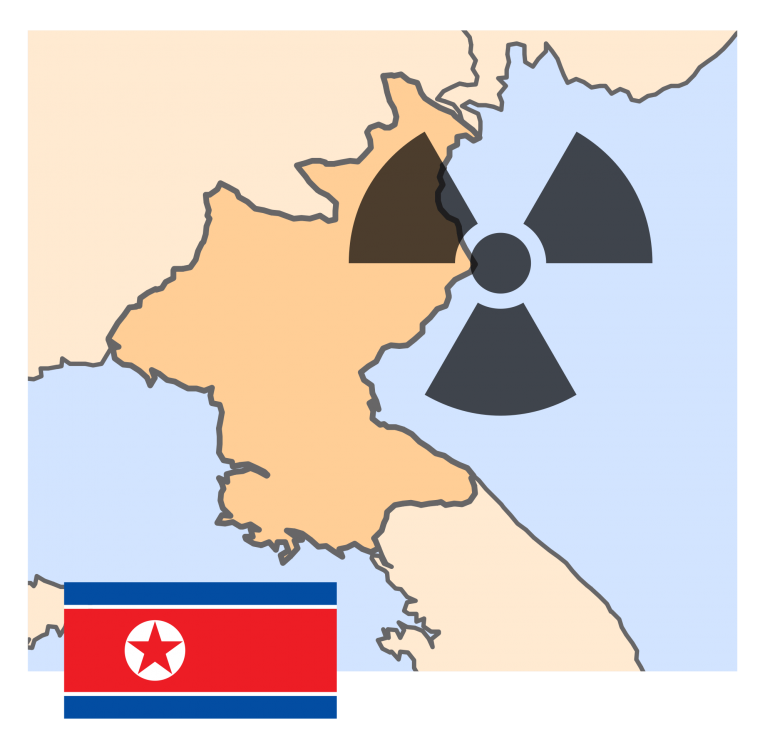The Yomiuri Shimbun and Japan Times first reported in the early 2000s that a war with North Korea would most likely result in the loss of hundreds of thousands of lives and would be over in three days. This was later repeated in a Congressional Research Service report here in the U.S, which stated that a new Korean war would mean“between 30,000 and 300,000 dead in the first days of fighting” and “hundreds of thousands of South Koreans would die in the first few hours of combat.” The US-Korea Institute at Johns Hopkins also estimates grim consequences if a nuclear war were to take place: 2.1 million dead and 7.7 million injured.
Since 1984, North Korea has tested roughly 117 satellites, missiles, and other weapons, many of which took place in the Northeast Asia region. With an increase in reports of hostility, the nuclear threat North Korea seemingly poses has gradually become commonplace. The past three leaders of North Korea’s monarchical and dynastic regimes have progressively developed their military nuclear weapons program, but the theocratic dictatorship has historically always feigned political supremacy and aggression. Though western media outlets have more recently emphasized the heightened North Korean threat, the DPRK has tried to bombast its way into the forefront of geopolitics over the past few decades, exacting attention through the employment of a pugnacious rhetoric.
Donald Trump and Kim Jong-Un’s December/January scuffle certainly appeared to hamper/hinder international relations between the two nations. Trump initially announced to the world via Twitter secondhand that “North Korean Leader Kim Jong-Un just stated that the ‘Nuclear Button is on his desk at all times.’” This was in response to the supreme leader’s annual New Year’s Day address in which he stated “The entire mainland of the US is within the range of our nuclear weapons and the nuclear button is always on the desk of my office. They should accurately be aware that this is not a threat but a reality.” However scary this may seem, these kinds of alarming threats and warnings are nothing new.
In the spring of 1994, the U.S. positioned 33 warships off the Korean peninsula after North Korea advanced to make bomb-grade plutonium at Yongbyon Nuclear Scientific Research Center. They threatened to obliterate Seoul into “a sea of fire,” a phrase that has since been reused a number of times. The US also called for sanctions against North Korea, a power-play tactic that is still deployed regularly today to combat North Korea’s bravado. Unsurprisingly, North Korea retaliated by declaring that any sanction against them would be considered “an act of war,” something they have reiterated over the past few decades.
President George W. Bush’s 2002 State of the Union address listed North Korea as part of the “axis of evil,” coupling the closed-off nation with sponsoring terrorism and developing nuclear weapons. Bush stated that North Korea was “a regime arming with missiles and weapons of mass destruction, while starving its citizens.” Later, Pyongyang retorted with a statement that North Korea would “mercilessly wipe out [their] aggressors.”
North Korea tested its very first nuclear bomb in October of 2006. International negotiations successfully halted North Korea’s development of nuclear weapons later that year in return for aid and food supplies. The agreement, however, was broken in 2009, and the North came back with a second nuclear bomb test in May of that year. Their military nuclear weapons program has been growing at a frightening pace ever since.
At the same time, Japanese news sources reported on discoveries that found how destitute and desperate the North Korean regime really was.
In September of 2002, “Dear Leader” Kim Jong-il issued an apology for the abduction of thirteen Japanese citizens between 1977 and 1983. The kidnapped individuals were brought to North Korea to teach Japanese language and culture at spy schools. Older abductees were captured for the purpose of stealing their identities. This awful long-thought-to-be conspiracy that North Korea ran a government abduction program was finally confirmed. Though many Japanese citizens from coastal regions reportedly went missing during these years, the North Korean government has only admitted to abducting the original thirteen.
The 1996 Gangneung submarine infiltration incident involved a North Korean 26 personnel submarine that was tasked with spying on South Korea’s naval installations. After the vessel became stuck, the crew abandoned ship and tried to make it back to the DMZ zone. With the North in the midst of a terrible famine that claimed hundreds of thousands of lives, North Korean soldiers were convinced that the South was ready to exploit and take advantage of them. Tragically, 11 members of the crew were executed in order to avoid capture, 13 were killed in action, one went missing, and only one soldier was captured (he would go on to defect and become an instructor in the South Korean navy.)
Similarly, in the 1998 Sokcho submarine incident, a North Korean submarine on an espionage mission became entangled in a fishing net five miles off the northeastern coast of South Korea. The vessel sank as authorities tried to tow it back to a port. It was later discovered that the entire nine man crew was dead; four had been murdered and five had committed suicide. Death before dishonor.
Around this time, Japanese news outlets periodically reported the capture of North Korean submarines off the northern coastal regions of Japan. The soldiers supposedly had holes in their socks and nothing but potatoes for food.
Kim Jong-un’s reign undoubtedly poses a legitimate threat to the safety of nations all around the world. North Korea’s recent increased testing of nuclear weapons is equally terrifying. And while recent tweets (such as the deriding “Little Rocket Man” insult) certainly do not make matters better, instead highlighting growing tensions between North Korea and its adversaries, this has always been a strategy of the impoverished nation. No one in their right mind hopes for “X-Day” or nuclear war, but the perceived imminent DPRK threat will invariably continue to haunt us as long as the North Korean government maintains its bellicose rhetoric.
This article originally appeared in the print edition of our February 2018, issue.





